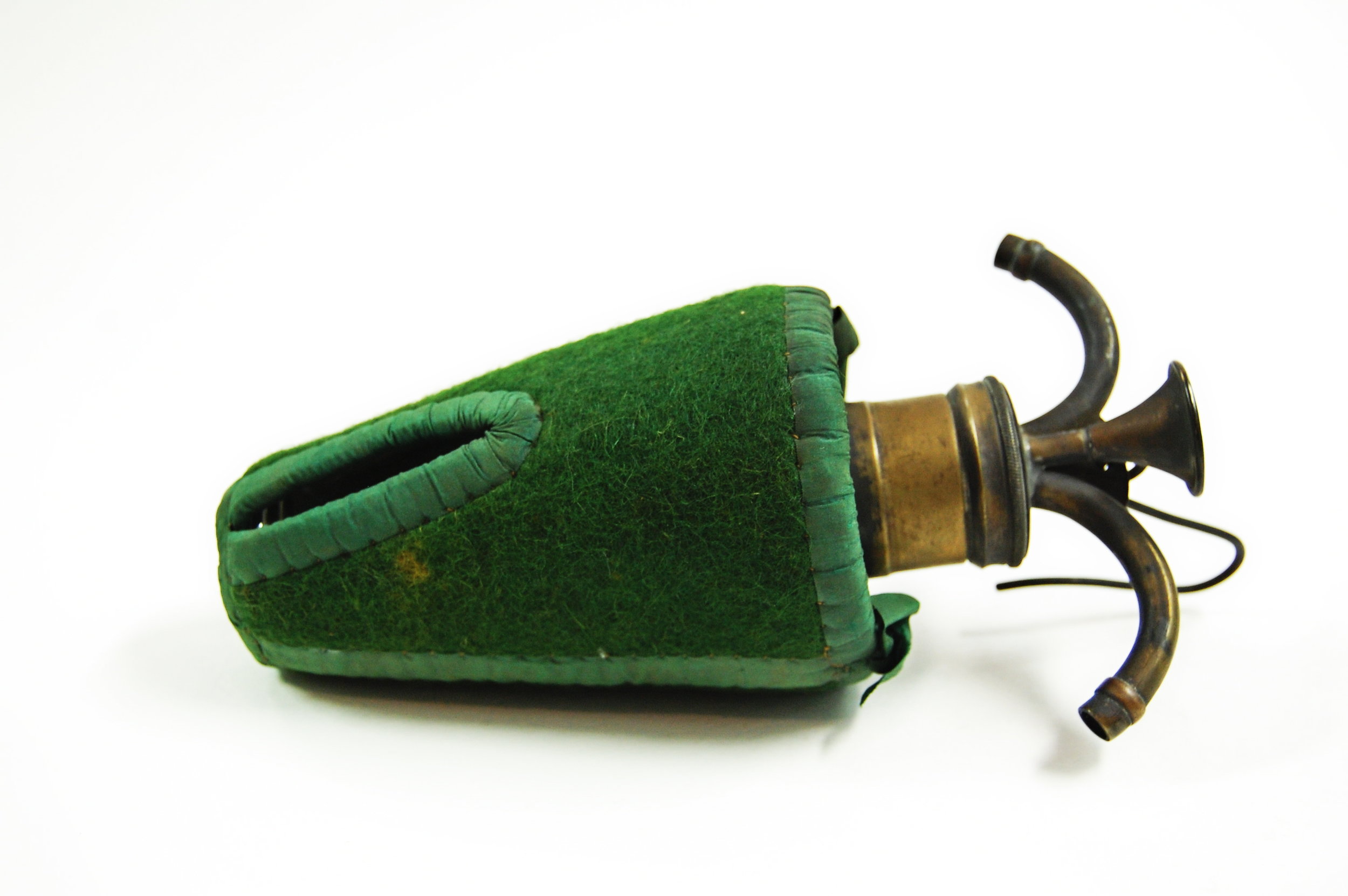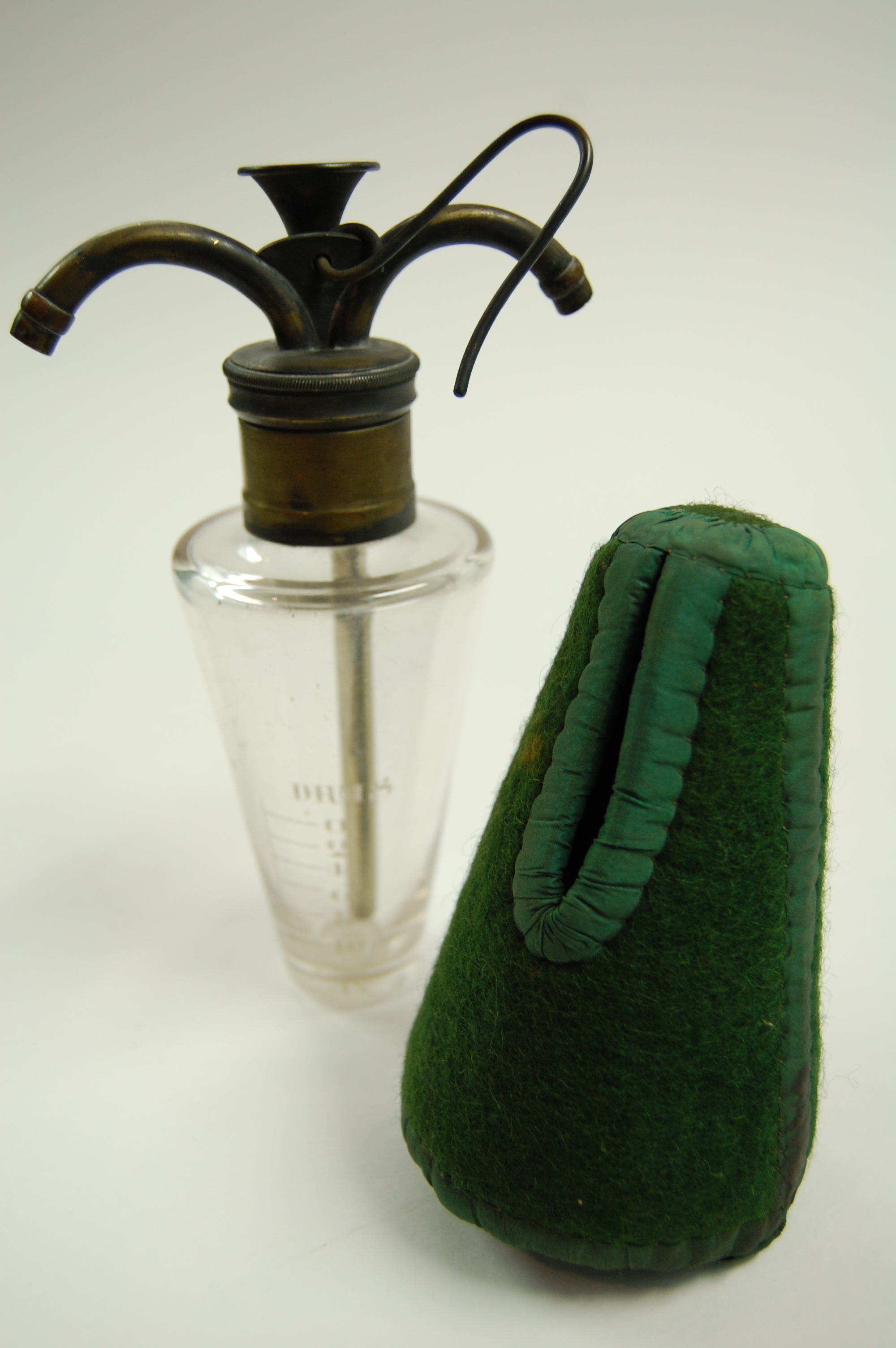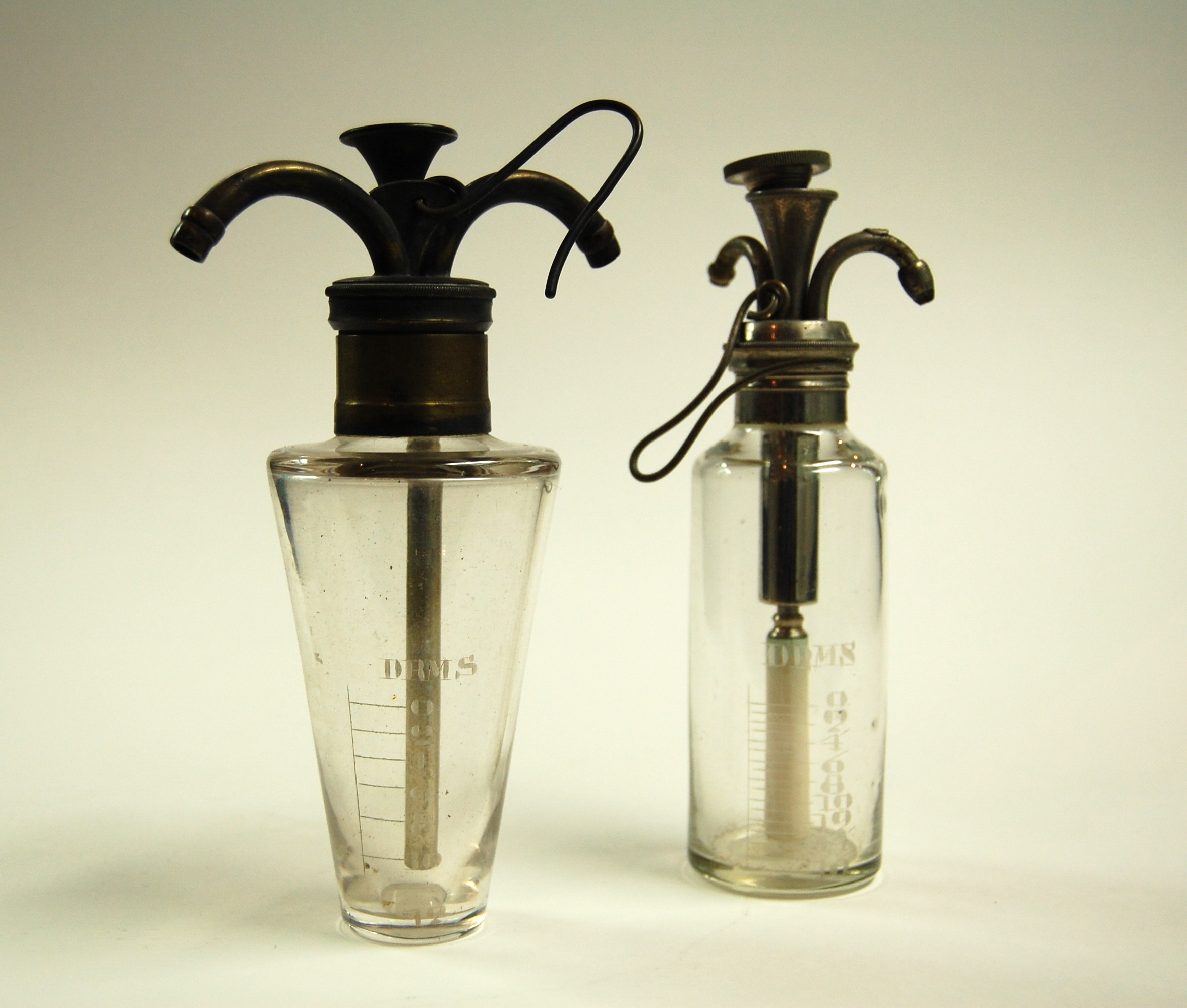


These bottles form part of Junker’s inhalers for chloroform and bichloride of methylene anaesthesia – a mixture of chloroform and methyl alcohol. Dr Ferdinand E. Junker (1828-1901) was an Austrian doctor who, in 1867, created the first inhaler for anaesthesia to function using the ‘blow over’ technique. This involved blowing air over the anaesthetic liquid by using hand-pumped rubber bellows - attached to the curved metal tubes at the top of the bottle - to create an anaesthetic gas which when inhaled by the patient via a mask induced unconsciousness prior to surgery. Junker’s bottles are where the liquid bichloride of methylene were stored during use.
The ‘blow over’ technique became one of the most popular methods for administering anaesthetics but had to be done so with great care. When these bottles were connected to the tubing and mask the anaesthetist had to ensure each part was correctly joined connected so that the dosage could be regulated and the patient didn’t swallow the liquid anaesthetic which would have been fatal.
Inventions such as this transformed surgery as the patient could be rendered unconscious in a much safer and controlled manner. This meant that people no longer had to stay awake (and therefore feel everything!) during surgical operations. Later models included a feather placed on the top of the adjoined mask to indicate the rate and state of the patient’s breathing.
These bottles are on display in the Anaesthetics display case at the George Marshall Medical Museum.